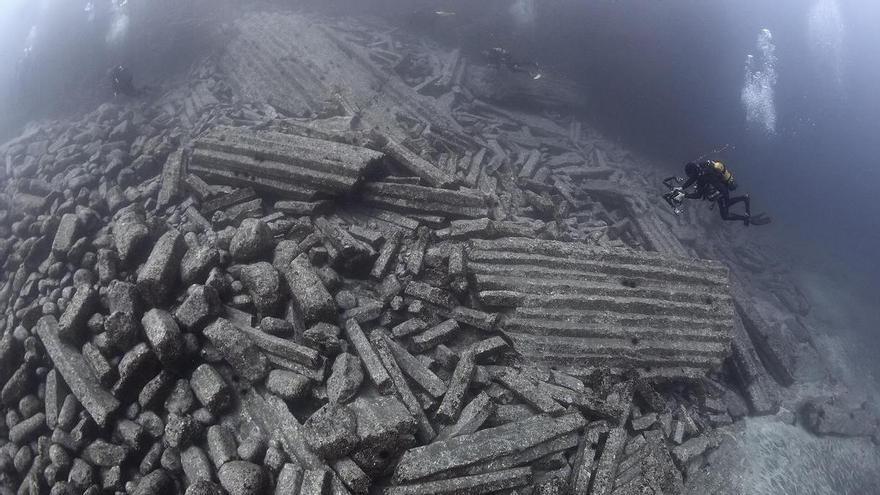
The City Hall of Santa Ursula has already taken the first steps to achieve greater protection of the spectacular underwater volcanic landscape of the Rapture, formed by a geological phenomenon known as columnar disjunction more than 500,000 years ago. The northern municipality works together with the Telesforo Bravo Foundation in the technical report necessary for the Geological and Mining Institute of Spain (IGME) recognizes it as a Geological Interest Place (LIG). A category that in Tenerife have places like the cliffs of Los Gigantesthe Teide, Old Peakthe Ucanca Plain, the Wind CaveLos Roques de Anaga or the Orotava Valleyamong others.
The mayor of Environment, Janira Gutierrez (AISU)explains that the proposal to extract and study one of the blocks or columns that make up the Rapture is part of this project to enhance this space, since it is necessary to have as much data as possible in order to achieve this official recognition. “We understand that at this time it is the best protection figure that we can access, although if another one arrives, such as that of natural monumentthey would be welcome. What we want is for this place to be recognized and protected in an appropriate way,” says Gutiérrez.
‘Sponsor a rock’
The Telesforo Bravo Foundation has already signed an agreement with the company Ideco, which runs the environmental volunteer service of the Cabildo de Tenerife, and the Geological and Mining Institute of Spain, to launch the environmental awareness program Sponsor a Rock in Tenerife. “Within this framework, and in collaboration with the Santa Úrsula City Council to conserve and publicize La Rapadura, we are going to work to have it declared a Site of Geological Interest (LIG) and included in the Spanish Inventory of Places of Geological Interest that is part of the National Law of Natural Heritage and Biodiversity”, informs Jaime Coello Bravo.
The renowned underwater photographer Francis Perez, winner of the World Press Photo 2017 in the Nature category and one of the discoverers of part of La Rapadura, alluded in recent statements EL DÍA to the possibility that this submerged area could also become a Natural Monument, like the Tindaya mountain , in Fuerteventura; Roque Nublo, in Gran Canaria, or Los Organos, on the island of La Gomera. According to Jaime Coello, this last formation has similarities and differences with La Rapadura, which “is basaltic”. In Los Órganos, “the formation process varies in some aspects apart from the fact that in this case they are made of trachyte”.
La Rapadura is located at the foot of the Protected Landscape of Costa Acentejobut in the Santaursulero Consistory they recognize that “it is not clear if La Rapadura can benefit from this protection or not, since it is located in bordering waters, but not on the cliff, which does enter,” says the mayor.
















